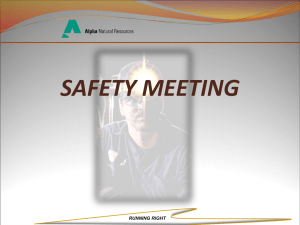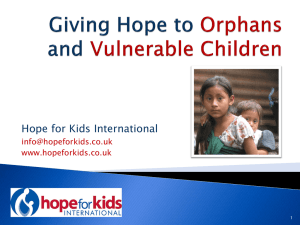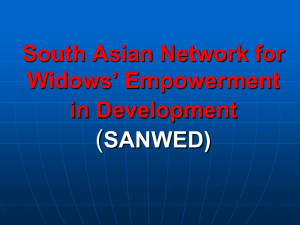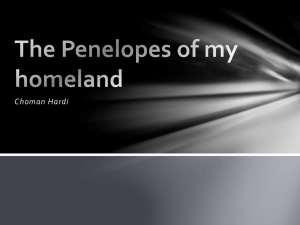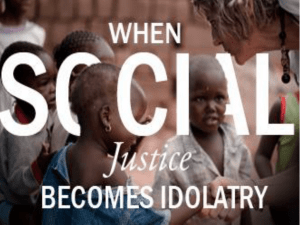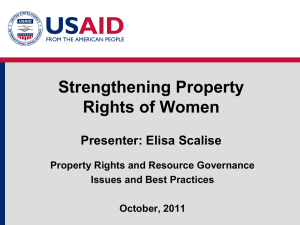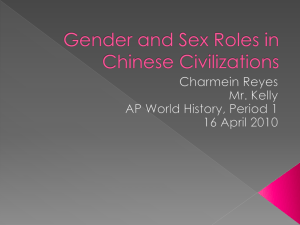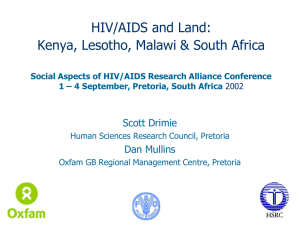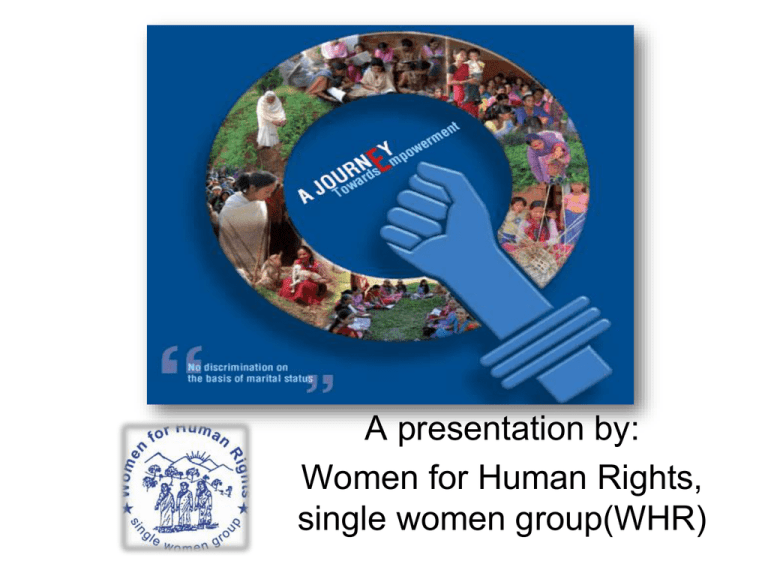
A presentation by:
Women for Human Rights,
single women group(WHR)
Background
Nepalese society is patriarchal, but where powerful
goddesses are women
However, in real life they are given subordinate roles.
Glimpses of subordination
of women
PHYSICAL ABUSE OF WOMAN
GENDER ROLES IN COMMUNITY
In a strong patriarchal society how
can women without husbands
exist, live and survive?
Women for Human Rights,
single women group
Special Consultative Status with ECOSOC of the United Nations
Women for Human Rights (WHR), single
women group is an NGO established in 1994
to address the rights of single women
(widows) in Nepal
• Women for Human Rights, single women group (WHR),
established in 1994, is a Non Governmental Organization
working for the socio-cultural, economic and political
rights of the widows of Nepal.
• WHR envisages to create a just and an equitable society
where there will be “No discrimination on the basis of
Marital Status'.
• WHR has organized over 84,000 widows in 1050 Village
Development Committees and municipalities of 73
districts of Nepal and has succeeded in mobilizing them
as key "Agents of Change" in their respective
communities.
Situational Analysis of
Widows
Inhumane cultural
practices
Aren’t these
extreme Human
Rights
violations?
Code of conduct
Ill cultural practices
Restrictions
Early marriage
Daughters are seen
as burden
67% - are
between 20-35
years
Lack of access to
Education
33% of them are
literate
Widow’s work not
valued as Productive
Around 2% of
widows obtained
higher degree of
education.
Dependent on Male
members
Widows do not have
access to the property of
their husbands. They are
denied their rights to
access resources and
capital. They become
dependent on others.
Source: Challenges & Problems faced by widows in Nepal- WHR 2010.
Article 1 of CEDAW states
that no one should be
discriminated on the basis of
their marital status.
In case of Nepal, widows are
discriminated because their
husbands are no more living.
Widows are socially, legally
and culturally discriminated .
Nepal is signatory to CEDAW Articles, but is the CEDAW
Article really being implemented?
State–Social Security
Policies
Rs. 500 as allowance to
widows over 60 years
(now removed age bar)
Over 85,000widows
below 45 year
registered only 1050
VDCs as WHR members
No other social security
for widows by the state
Is the
Allowance
Scheme
justifiable ?
Can we
imagine how
many widows
will be in the
remaining
VDCs?
STATUS OF WIDOWS IN NEPAL
A high percentage of 78% of widows are found
to be victims of various forms of violence. A
verbal violence was registered at 80%, 12%
encountered physical violence whereas 8%
underwent sexual harassment.
More than 40%
of widows get
married before
the age of 20
33% of widows are
literate only and 2% of
them have higher
education
Widows face the problem of
homelessness and
displacement; 'property
grabbing' and 'chasing off';
lack of employment; no/limited
access to market; no job
replacement; lack of secured
shelter, discriminatory wages
and no collateral to access to
credit.
After the death of husband, children,
particularly girl children are dropped
out of school and there is decrease in
access to basic needs, such as food,
clothes, shelter and health care.
Among 85,000
registered members of
WHR, 3,907 of them
are conflict affected
widows
20% of widows
have migrated and
displaced due to
the conflict in their
community
67% of widows are under
20-35 years of age having
on average 3-4 children
The conflict and
displacement have
made widows more
vulnerable to
trafficking, sexual
and physical abuse,
HIV/AIDs and
mental harassment.
Conflict Affected
Displaced Widows
In Kathmandu alone there are more than 800 conflict
affected displaced widows)
67.9% of these women are displaced to community
different from cultural background than from the origin
which has denied their rights to culture and its
prevention.
35.7 % of these displaced women lies between the age
group of 25-30.
Forced to share a small room with 3-4 kids, living in
unhygienic environment with inadequate clean
drinking water and sanitation.
Where can this section of population seek justice?
Has the United Nations Security Council Resolution 1325 which addresses the right of
conflict affected women actually been implemented?
Contd…
82.9% of these women are living in economic crisis having severe
difficulty to have two meals a day for themselves and their children
Conflict affected displaced widows in urban centers are forced into
informal sectors such as cabin restaurants, dance bar, sex work,
massage center for the livelihood of their children while their
children do not have access to education.
Unaware of the process for the compensation, legal services, rights
and other facilities.
Source: Impacts of Conflict-Displaced Women by Shrestha Sumeera.
Where is the provision of fulfillment of right to basic needs?
Where is the consolidated package of service and proper mechanism?
Isn’t a holistic approach to service necessary ?
Displaced women have been affected
by conflict in following major areas
Financial deprivation
Physical victimization
Psychological trauma
Social exclusion
Institutional discrimination
In this scenario can they enjoy their
fundamental rights?
Institutional and Organizational development – Pillar V
Pillar Components
Local Governance - Pillar IV
Justice, Human rights and
Peace - Pillar III
Economic Empowerment and
Mobilization - Pillar II
Socio-Cultural Empowerment
and Movement – Pillar I
Results on
Beneficiary Level
Opportunity
Fund
To provide scholarship to the needy children of widows
and young widows
To provide loans with low interest
without any collateral (group
guarantee) to women who wish to
set up small business.
Aadhar- Saving
and Credit
Program
Program
Components
SWEG for
Economic
Independence
ChhahariShade of Tree
Raahat
To provide skill development
trainings to widows for income
generating activities.
To provide immediate services to
conflict affected, vulnerable and needy
widows and their children.
To support displaced conflict affected women, their
children and family through holistic approach of
integration model.
National Level
(Central Level)
International
Chapter
Regional Level
(Five Development
Regions of Nepal)
District Level
VDCs/ Ward Level
South Asian
Regional Level
South Asian Network
for Widows'
Empowerment in
Development
(SANWED)
Networking
• WHR has its own decentralization strategy. It has formed
the links and networks with organizations working on
women’s issues and human rights issues.
• WHR has involved all its stakeholders in its programs to
sensitize everyone about the issues and plights of single
women and work integratedly for the empowerment of
widows.
• WHR is in an alliance named Sankalpa (Women’s Alliance
for Peace, Democracy and Inclusive Constituent
Assembly) for lobbying and advocating for women’s
issues.
Policy
Makers
Individual
Government
INGO’s
Bilateral
Agencies
Family
Stakeholders
of WHR
Religious
Leaders
Community
Leaders
NGO’s
Women
Organizations
UN Bodies
Media
Local
Agencies
Program/Resources flow
Government/
INGOs/ NGOs
WHR Central Office
Development Regional Office
District Committees
Village Development Committees
Widow’s Groups
Progress at Grassroots levelFormation of
district
committees in
various districts
Launched
the Red
Movement
campaign
Empowered many
widows to become
confident and build their
capacity and leadership
skills
Trained and mobilized
over 5000 Shahayogi
Saathis (social
mobilizers), para legal
volunteers and para
counselors
Thousands children of
widows and hundreds of
young widows get
scholarship support from
the Opportunity Fund
Widow’s groups
mobilising as Peace
Makers in their
communities by bringing
all categories of widows
together in the groups.
Contd……
Many Widows trained in traditional and
non traditional skills like driving,
Beauticians, electricians, mobile repair
e.t.c
Soft loans provided to widows in
various districts for income generation
Activities
Many Widows
mobilizing as an
Activists against
Violence in the
communities
Many Widows are into
Local Peace Committee
and into Conflict
Management Committee
of District Development
Committee.
CHHAHARI safe space for Widows
Kathmandu-
Jhapa -
Surkhet-
Kavre
Sunsari -
Saptari (under construction)
Progress at Policy levelWHR has been able to incorporate
the issue of widows in the 10th & 11th
five year and into 3 years Interim
Plan of Nepal
Raised issues concerning the need
for social security schemes for
Widows at the national level, and
this has been reflected in the
Directive Principles and Policies of
the Interim Constitution 2006
Drafted Three Years Interim Plan
(TYIP) for widows through National
Planning Commission
Established Emergency Fund for
Widows in Ministry of Women,
Children and Social Welfare in 2011
Progress at Policy level- cont………..
Widows no longer need to take the
permission of the male family member
to obtain passport.
Widows no longer need to
reach the age of 60 to get
monthly allowance (NRs 500)
from the Government.
The property of deceased husband which the
wife inherits no longer needs to be returned
to her husband's family after remarriage.
WHR has succeeded in
changing the discriminatory
laws and policies against
Widows which are :
Widows do not have to remain in the
chastity of her deceased husband to
inherit the property.
Widows no longer need to reach the age
of 35 to inherit deceased husband's
property.
Widows no longer require the consent of their
adult sons and unmarried daughters to sell or
hand over property ownership.
No more Government's
policy to provide NRs.
50,000 to men who marry
widows.
At SAARC level
Developed Widows Charter and
endorsed through SANWED
Formed SANWED
WHR nominated as Secretariat for South Asian
Network for Widows’ Empowerment in Development
(SANWED)
Incorporation of issue of widowhood
in 15th SAARC Summit, Colombo
Declaration 2008
Common Issues of Widows
• Almost all widows face the problems
related to the burden of extra work,
exploitation, violence, sense of
loneliness and insecurity.
• Lack of quantitative and qualitative
authentic data on widowhood.
• Widows are often excluded from
income generating activities due to
lack of skills and funds and this is
followed by children, particularly girl
children, dropping out of school and
decrease in access to basic needs
such as food, clothes, shelter and
health care.
Common Issues of Widows...........................
• Negligence of increasing number of
widows mainly due to armed
conflict, ethnic conflict, ethnic
cleansing, harmful traditional
practices, HIV/AIDs, accidents and
natural disasters.
• Widows are stereotyped exclusively
as either victims or beneficiaries,
and their roles as key resources and
social capital in development and
peace building are ignored.
• Widows face discriminative legal
and Government polices and
programmes.
Common Issues of Widows...........................
• Lack
of
education
which
consequently increases their poverty,
emphasizes low status of widows and
due to which they are more
vulnerable to exploitation, violence
and abuse.
• Widows are often isolated, not
"banding together", their voices
unheard and they are not recognized
as "Agents of Change".
• Limited, restricted or lack of access to
services such as health, nutrition,
housing, social security schemes.
Common Issues of Widows...........................
• Most widows face psychological
problems and mental stress and
are tormented by psychological
changes in their children after the
death of their husband.
• There is significant increase in
homelessness, displacement,
migration, "property grabbing" and
"chasing off" of widows due to the
conflict and are highly vulnerable
to trafficking and abuse.
Common Issues of Widows...........................
• Widows face the problem of lack of
employment opportunities and secured
shelter (safe space); no or limited
access to market; no collateral to
access to credit; and discriminatory
wages.
• Widows are still blamed for their
husband's death and are considered
to be harbingers of misfortune.
• Still the widowhood is not recognized
as an issue to be addressed.
How Can You Join Us In Widows' Movement?
• Support for economic empowerment
of widows and provide help for the
educational opportunities for widows
and their children.
• Provide financial and technical
support for WHR activities for the
empowerment of widows of Nepal.
• Support for building "Safe Space" for
widows for their holistic development.
• Assist for conflict affected women
and children.
How Can You Join Us In Widows' Movement?
• Support in advocacy campaigns for
the rights of widows, es and
programmes for the widows.
• Advocate for appointing UN Special
Representative for Widows.
• Support for the adoption of Widows'
Charter and its implementation and
enforcement at the National and
International level.
• Establish a basket fund for tackling
widows' issues in the world.
Widows in groups are the strength to society
Widows’ issue is a national issue, they are the victims of cultural and
traditional practices of society and are from all castes and creeds.
To ensure widows’ rights is to ensure a just and egalitarian society
Questions and Queries !!
Thank you

